Qidi Tech Q1 Pro Review: Top Choice For Engineering-Grade Filaments
When you first get into the hobby of 3D printing and discover what those high-end, industrial machines can do, it's hard not to daydream about piecing together your own super printer. It's akin to someone who buys a car and then puts more money into mods than the car's initial cost to create their own high-performance machine, all because the process is fun and the outcome is “cool”. In the 3D printing world, it's about building a printer that can handle the tough stuff—those engineering-grade filaments that require just the right touch of mods to be used successfully.
Enter Qidi Tech with their Q1 Pro. They've pretty much read the minds of every 3D printing enthusiast out there by equipping this printer with some seriously cool features, most notably a chamber heater that's usually only found in the big, pricey industrial printers. Now, anyone can start pushing the limits of high-end printing right from their desk, no fancy mods required. In this review, we examine all the tech specs and features, and what you can expect from this amazing desktop 3D printer.
| QIDI Tech Q1 Pro Links | |
|---|---|
| Qidi Tech Official Store | Click Here |
| Qidi Tech YouTube Page | Click Here |
| Qidi Tech Instagram Page | Click Here |
| Qidi Tech Facebook Page | Click Here |
| QIDI Tech Q1 Pro Quick Tech Specs | |
|---|---|
| Price | Early Birds $469 USD (Original $599 USD) |
| Build Volume | 245*245*245 mm |
| Max Printing Speed | ≤600mm/s |
| Max Acceleration | 20000mm/s² |
| Max Chamber Heater Temp | 60℃ |
| Max Hotend Temp | ≤350℃ |
| Max Bed Temp | ≤120℃ |
| Filament Compatibility | PLA, ABS, ASA, PETG, TPU, PC, PA, PA-CF, PET-CF, PAHT-CF, etc. |
| Firmware | Klipper |
About Qidi Tech
Since its inception in 2014, QIDI Technology has carved a distinguished path in the 3D printing industry. It's not merely about producing FDM printers; it's about redefining what's possible in 3D printing through relentless innovation. With a portfolio brimming with patents and software copyrights, QIDI Technology demonstrates its unwavering dedication to pushing the boundaries of 3D printing technology.
QIDI's influence spans the globe, underscored by strategic collaborations with leading retailers such as Amazon and Walmart. Notably, it became the first Chinese 3D printer manufacturer to forge a direct partnership with Amazon, a testament to its exceptional quality and reliability. This has cemented QIDI's reputation across critical markets, including the United States, Britain, Germany, Japan, and Canada.
As QIDI Technology celebrates a decade of innovation, its commitment to excellence remains evident. The company boasts a robust R&D team and offers responsive after-sales service, establishing industry benchmarks for customer support. Products like the X-Max 3 and X-Plus 3 have introduced new benchmarks, facilitating seamless printing with advanced filaments and catering to a broad user demographic with their large print volumes and intuitive designs. QIDI Technology continues to earn accolades for blending sophisticated features with user-centric engineering, catering to both hobbyists and professional users alike.
Unboxing and Setup of the Q1 Pro
From the moment the QIDI Tech Q1 Pro arrives at your doorstep, you're treated to an unboxing experience that hints at the exceptional quality and precision that define this printer. The meticulous packaging reflects QIDI Tech's commitment to excellence, ensuring each component is meticulously secured and presented in flawless condition. Within the box lies everything necessary to embark on your 3D printing journey, including the printer itself, a comprehensive user manual for seamless setup, and an assortment of tools and accessories crucial for your inaugural print.
The process of getting the Q1 Pro up and running is remarkably intuitive. Thanks to clear, structured instructions and a design focused on ease of use, the setup phase is a breeze, even for those new to 3D printing. The journey from unboxing to initiating your first print is fluid and straightforward, instilling confidence in users of all experience levels. Initial steps such as assembling minor components, loading the filament, and leveling the print bed are simplified by the Q1 Pro's user-friendly interface and responsive controls.
A pivotal feature of the setup is the calibration phase, meticulously guided to ensure optimal printer tuning for superior print quality. This rigorous approach to calibration underscores QIDI Tech's dedication to not only producing powerful printers but also making advanced 3D printing technology accessible and manageable for a broad audience.
Main Features of the Q1 Pro
The QIDI Tech Q1 Pro distinguishes itself within the desktop 3D printing market through its comprehensive array of advanced features. Each aspect of its design and functionality has been meticulously developed to cater to a broad spectrum of printing needs, from hobbyist projects to professional-grade applications. Below are the standout features that elevate the Q1 Pro beyond its peers:
Fully Automatic Leveling with Dual Sensors: The Q1 Pro utilizes dual sensors that ensure the bed is perfectly level before each print. This fully automatic system significantly enhances print reliability and quality, particularly for prints that demand high precision.
Dual Z-Axis: Complementing its levelling prowess, the Q1 Pro is equipped with a dual Z-axis setup. This configuration not only provides superior stability and precision during printing but also automates the levelling process, guaranteeing unparalleled accuracy in every layer.
High-Temp Hotend & Bed: To print advanced materials you need a hotend and bed that can hit the necessary temps. The Q1 Pro hotend can reach 350℃ while the bed can hit 120℃.
Dual Metal Nozzle for Ultimate Filament Compatibility: The Q1 Pro's dual metal nozzle is designed to work seamlessly with a wide array of filaments. Whether you're working with standard materials like PLA and ABS or exploring more challenging filaments such as nylon and carbon fibre composites, the Q1 Pro handles them with ease.
Filament Runout Detection and Wrapping Detection: Ensuring continuous, uninterrupted printing, the Q1 Pro is equipped with sensors for detecting filament runout and filament wrapping. These features safeguard against common printing issues, allowing for smoother printing experiences and reducing waste.
High-Speed Printing with Advanced Flow and Acceleration: The Q1 Pro is capable of reaching a maximum speed of 600mm/s, with a maximum flow rate of 30mm³/s and acceleration up to 20000mm²/s³. These impressive specifications mean that the Q1 Pro can deliver fast print times without sacrificing the quality of the finished product.
TMC2240 Drivers for Ultra-Quiet Operation: Noise reduction is taken to the next level with the TMC2240 drivers, ensuring that the Q1 Pro operates quietly, making it ideal for use in both office and home environments.
Sturdy Full Metal Frame: The durability and stability of the Q1 Pro are enhanced by its full metal frame, which contributes to consistent printing performance and longevity of the machine.
Klipper 64-bit Processor for Enhanced Performance: The Q1 Pro runs on Klipper firmware, renowned for its powerful performance and extensive customization options. This software allows for precise management and optimization of printing processes, unlocking the full potential of the printer
Internal Camera for Remote Monitoring: The inclusion of an internal 1080p camera allows users to monitor their prints in real-time from anywhere, adding a layer of convenience and control to the 3D printing process.
Chamber Heater for High-End Filament Printing: The chamber heater is a pivotal feature for those looking to print with engineering-grade materials. By maintaining a consistently high temperature, the Q1 Pro ensures optimal conditions for a wide range of filaments, pushing the boundaries of what's possible in desktop 3D printing.
Tech Specs
| Feature | Q1 Pro Specs |
|---|---|
| Package Dimensions | 545*535*595 mm |
| Printer Dimensions | 477*467*489 mm |
| Build Volume | 245*245*245 mm |
| Printer Weight | 20.3 kg |
| Motion System | CoreXY |
| X/Y Axis Specification | 10mm High hardness linear hollow steel shafts, belt tensioned automatically |
| Z Axis Specification | Dual Independent Lead Screw Motors |
| Printing Accuracy | ±0.1mm |
| Printing Speed | ≤600mm/s |
| Nozzle Diameter | 0.4mm (0.2/0.6/0.8mm Optional) |
| Nozzle | Dual Metal Nozzle |
| Extruder Temp | ≤350℃ |
| Extruder | High-flow Direct Drive Extruder with Hardened Steel Gears |
| Hot End | Ceramic Heating Core |
| Chamber Heater Max. Temp | 60℃ |
| Chamber Heater Power | 300W |
| Recommended Filament | PLA, ABS, ASA, PETG, TPU, PC, PA, PA-CF, PET-CF, PAHT-CF etc. |
| Hot Bed Temp | ≤120℃ |
| Printing Platform | Aluminum Substrate Heating Bed |
| Printing Plate | Dual-Sided Textured PEI Plate |
| Printing Acceleration | 20000mm/s² |
| Extruder Flow | 35mm³/s |
| Auxiliary Part Cooling Fan | Yes |
| Chamber Circulation Fan | Yes |
| Filament Tangle Detection | Yes |
| Filament Run Out Sensor | Yes |
| Input Shaping | Yes |
| Power Loss Recovery | Yes |
| Extruder Transmission Ratio | 8.9:1 |
| Display Screen | 4.3 Inch 272*480 Touch Screen |
| Firmware | Klipper |
| Storage | 32G EMMC and USB2.0 Flash Drive |
| Main Processor | Cortex-A53, 64-bit Processor |
| Connection Options | WiFi/USB Flash Drive/Ethernet Cable |
| Operating System | Windows/MacOS/Linux |
| Camera Specifications | Low Framerate Camera (Up to 1080P), Timelapse Supported |
| Wifi Specifications | 150M 2.4G |
| Slicer | QIDI Slicer/Cura/Simplify 3D/ORCA/PRUSA |
| File Formats for Slicing | STL, OBJ, 3MF, STEP, STP |
| Voltage | 100-240 VAC, 50/60Hz |
| Rated Power | 350W |
The Chamber Heater Advantage
Chamber heater on the Q1 Pro
Incorporating a chamber heater addresses a well-known challenge among 3D printing enthusiasts and professionals alike: printing with high-grade filaments. The presence of a chamber heater is a necessity for achieving successful prints with materials that demand consistently high chamber temperatures. This feature, traditionally seen in industrial-grade machines, is crucial for preventing common issues such as layer separation and warping, which can compromise the structural integrity and appearance of prints.
The Q1 Pro leverages the chamber heater to create a controlled environment within the printer, ensuring that the entire space is evenly heated. This approach is a departure from the passive heating method used by regular enclosed 3D printers, which rely on the heat emanating from the bed. Typically, these printers need a heat-soak period of 30 to 60 minutes to affect the internal temperature adequately. In contrast, the Q1 Pro's active heating method quickly brings the chamber to the desired temperature, significantly reducing the wait time and enhancing the printing process's overall efficiency.
This feature is especially beneficial when working with engineering-grade filaments. Such materials require stable high temperatures to maintain their form and adhere properly between layers. By providing an optimal printing environment from the start, the chamber heater ensures that users can consistently produce prints with smooth finishes and robust structures, directly aligning with the expectations set by industrial-grade printing capabilities.
The inclusion of a chamber heater in the Q1 Pro thus offers a tangible advantage for users looking to explore the potential of high-end filaments. While the concept of chamber heating is familiar to those versed in the nuances of 3D printing, its availability in a desktop model like the Q1 Pro democratizes access to a higher quality printing experience previously reserved for industrial applications.
My Experience With The Q1 Pro
The Q1 Pro arrived fully assembled with only the removal of a few zip-ties that stopped the motion system from moving during transport that needed to be removed before printing could begin. The setup process is easy, the built-in screen guides you through each step which I found to be a feature that should be included in every 3D printer, forget the paper or PDF manuals. The only part that needed to be ‘assembled’ was the filament holder that slid into place on the back of the printer. After the initial calibrating is done, the printer is ready to start printing.
The very first print I sent to the Q1 Pro was a bed-levelling test print which prints squares and connecting lines over the entire build plate. I wanted to test how accurate the Q1 Pro was right out of the box with no manual tuning needed. The test was a success producing a first layer with perfect layer thickness on every square. For new users, this might not be very exciting but as someone who has been using 3d printers for many years and has gone through the struggles of late-night YouTube tutorials and manual intervention, this was very impressive.
My next test was of course a speed boat benchy where I wanted to test out the max speed of the printer and see what quality it could produce. I printed with PLA and was able to get a print time of just under 30 minutes which was rather low when compared to other 3D printers in this price range. I did not max out all of the slicer settings for this test, I still had some ‘mild’ settings for the overhangs and bridging that added extra time. This is still a very impressive time for an out-of-the-box printer with no mods.
The user experience has been fantastic from the very beginning. With the unboxing and already mentioned guided visual setup on the LCD screen, I’ve had no problems getting this printer to do what I want. The touchscreen works great and the menus give me access to every feature I need. Setting up a connection to the Qidi slicer through my home network was extremely easy and allowed me to control and monitor the printer from my PC. I don’t think you should control your printer any other way. Using a USB to transfer your prints is now an out-of-date technique.
The Q1 Pro has a huge plastic door that stays closed with the help of magnets and a top panel that can be removed so you can keep the printer cool while printing with PLA/PETG/TPU and any other low-temp filament. This also gives you access to the hotend when doing filament changes. The top panel has a simple snug fit that keeps it in place. The plastic definitely scratches easily and the top panel has suffered a lot of scuffing from the PTFE tube as it rubs against it during printing.
The highlight of testing was printing a full spectrum of speedboat benchys with all of the high-grade filaments that I had on hand. With the chamber temp maxed out at 60 degrees, I was able to print with no worry of warping or failed prints. I printed with PLA, PETG, ABS, ASA, PC, PC-CF, and PA-CF.
The printer has worked flawlessly through my various tests. This is definitely a good printer for new users and would also work very well in a print farm. The only knowledge that is needed for using the Q1 Pro is setting the right slicer settings. There are profiles for each filament that make this process easier but it’s best to learn the slicer a little so you can get the most out of the Q1 Pro.
Get Your Q1 Pro Here
The Q1 Pro is now available from their official site. Early birds catch the worm, or in this case, an unbeatable deal of $469, significantly down from the regular price of $599—or for our Canadian friends, $629 CAD from the usual $799 CAD. This Early Bird offer is your golden ticket to leapfrog into advanced 3D printing without denting your wallet. But hurry, deals this good don’t last forever.
FAQ
Q: Can the Q1 Pro print with any type of filament?
A: The Q1 Pro is designed to handle a wide range of filaments, from standard ones like PLA and ABS to more specialized materials such as nylon and carbon fiber composites, thanks to its dual metal nozzle and chamber heater.
Q: What makes the chamber heater in the Q1 Pro special?
A: Unlike traditional enclosed printers that rely on passive heating, the Q1 Pro's chamber heater actively heats the printing environment. This feature is crucial for working with engineering-grade filaments, ensuring consistent temperature control for optimal print quality.
Q: Is the Q1 Pro suitable for beginners?
A: Yes, the Q1 Pro is designed to be user-friendly, featuring fully automatic leveling with dual sensors and a guided setup process on the built-in screen. These features, combined with its intuitive interface, make it accessible for beginners.
Q: How fast can the Q1 Pro print?
A: The Q1 Pro boasts a maximum speed of 600mm/s, with a maximum flow rate of 30mm³/s and acceleration up to 20000mm²/s³, making it one of the fastest printers in its class without compromising print quality.
Q: Can I monitor my prints remotely with the Q1 Pro?
A: Yes, the Q1 Pro includes an internal camera for real-time monitoring of your prints from anywhere, adding convenience and control to your 3D printing process.
Q: How does the Early Bird offer work for the Q1 Pro?
A: The Early Bird offer allows you to purchase the Q1 Pro at a discounted price of $469 (regular price $599) or $629 CAD (regular price $799 CAD). This offer is available for a limited time around the launch date, providing significant savings for early adopters.
Q: Will I need to assemble the Q1 Pro upon delivery?
A: The Q1 Pro arrives mostly assembled. You'll only need to perform minimal setup tasks, such as removing transport safeguards, installing the filament holder, and going through the initial calibration process, all of which are guided by the printer's interface.
Q: What support is available if I encounter issues with my Q1 Pro?
A: QIDI Tech is known for its responsive after-sales service team. They offer fast support services to help customers solve any problems, ensuring a smooth experience with the Q1 Pro.
Pros/Cons
Cons:
Filament mount and PTFE tube at rear
Power button at rear
No air filter
Pros:
Price
Chamber heater
Perfect first layers
Nozzle scrubber
Adaptive bed mesh
Filament compatibility
The only cons I can think of for the Q1 Pro are the locations of the filament arm and the power button. If you have your printer up on a shelf or in a print farm setup where your printers are pushed together, getting to the filament and loading it will require pulling the print forward. A side mount option would greatly reduce the need for moving the printer to load filament and it would also save some space in between printers. I’m sure that if you are using the Q1 Pro in a print farm you would come up with your own custom solution for hanging the filament. If you are printing with PA or ABS or any other highly hygroscopic filament, you’ll most likely want to print with the filament still in a filament dryer.
The power button at the rear means that you’ll need to either blindly locate the switch to turn it off/on, or you’ll need to pull the printer forward. Again, this will be a bigger problem when the printer is on a shelf next to other printers.
A built-in HEPA air filter or equivalent would be a nice feature for the Q1 Pro. Since this printer is targeted at printing ABS and ASA which produce a lot of VOC’s, it would be nice to filter the air inside the chamber.
Related Articles






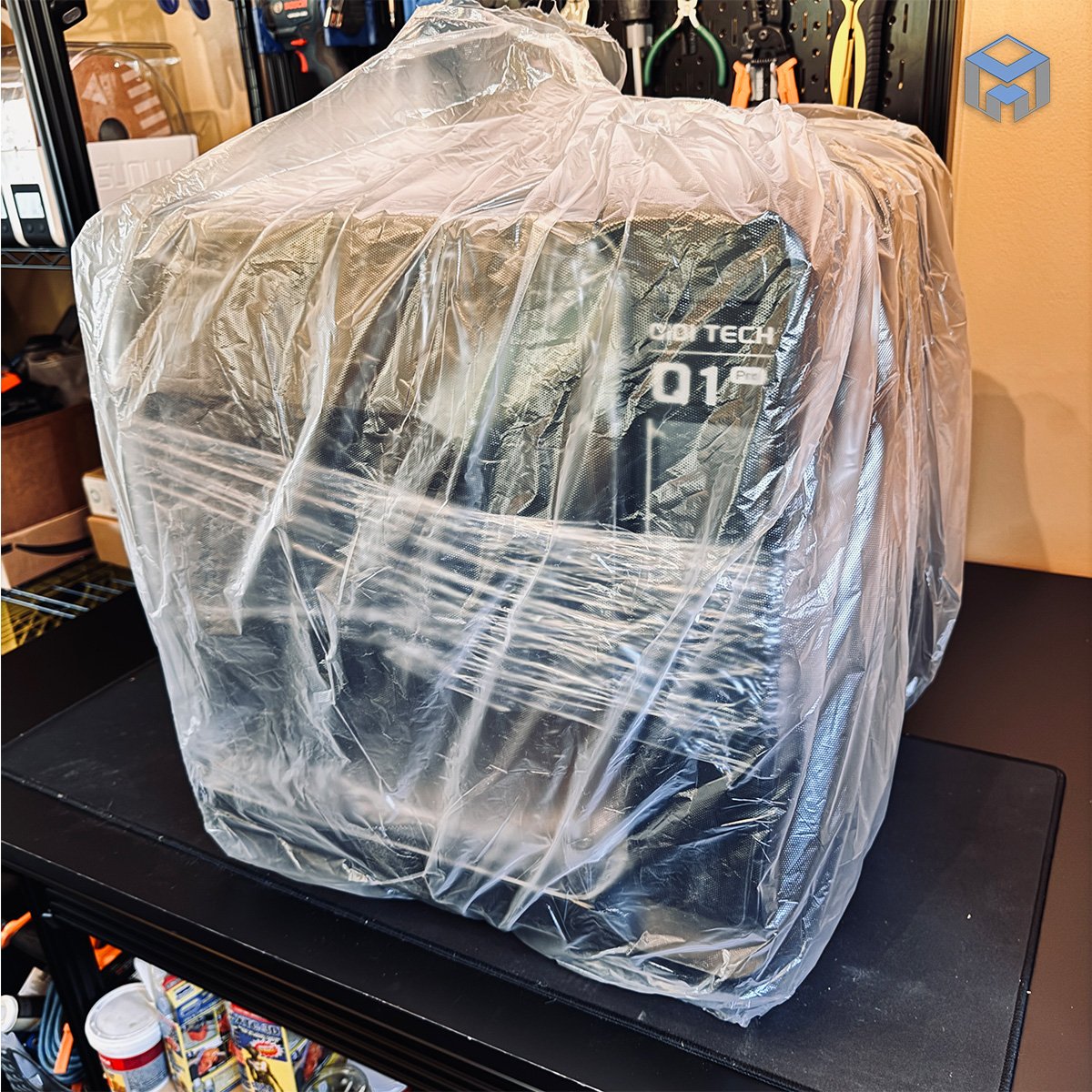










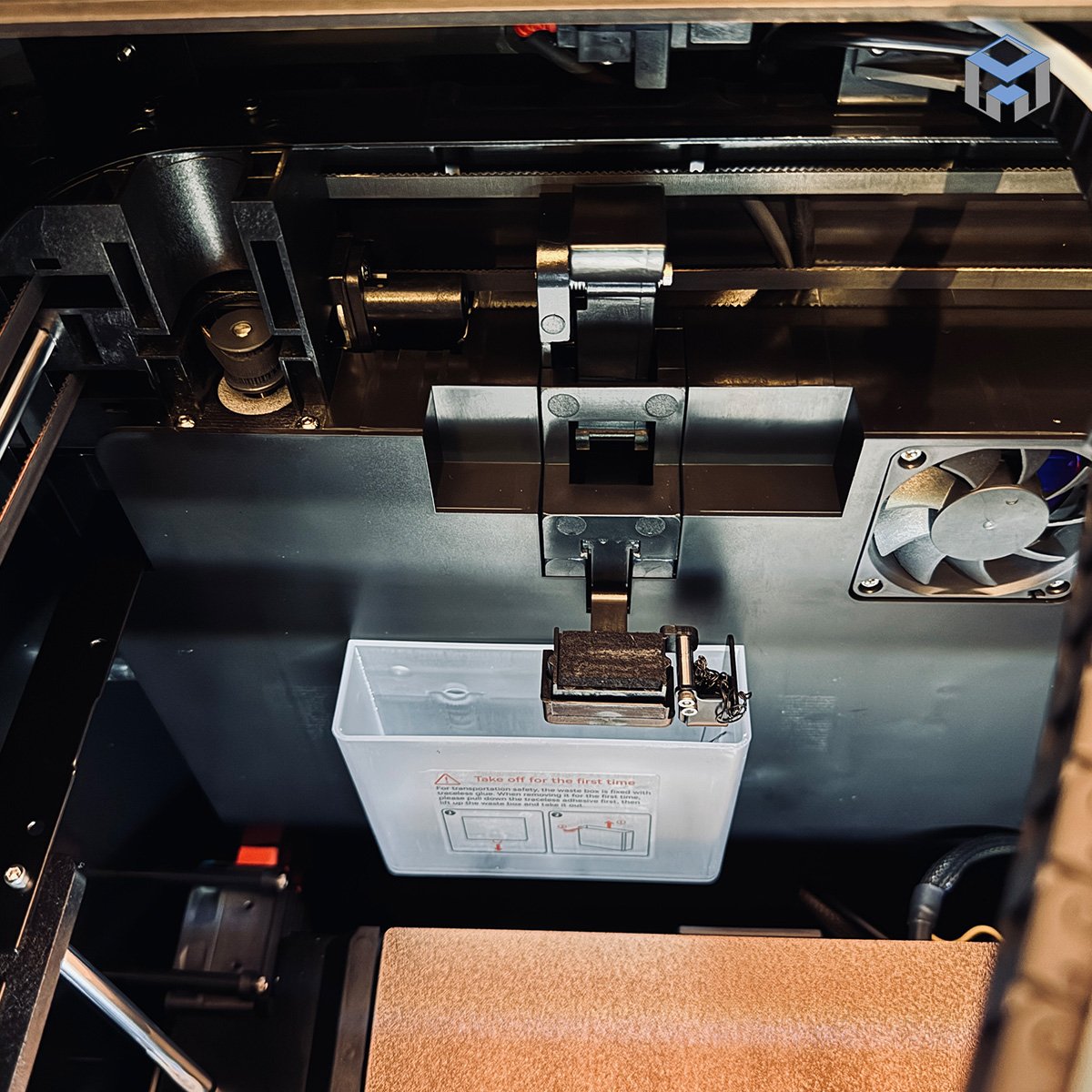
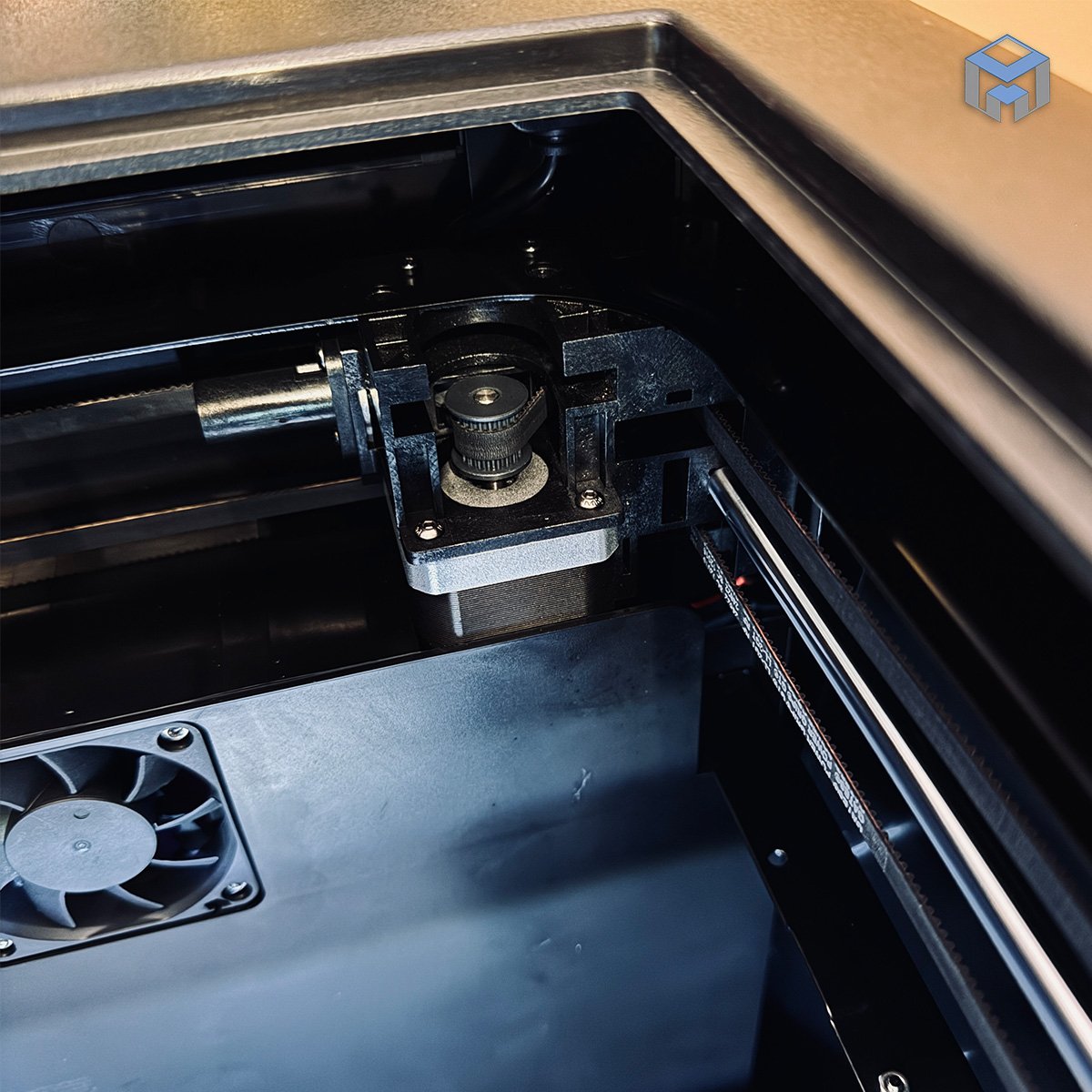









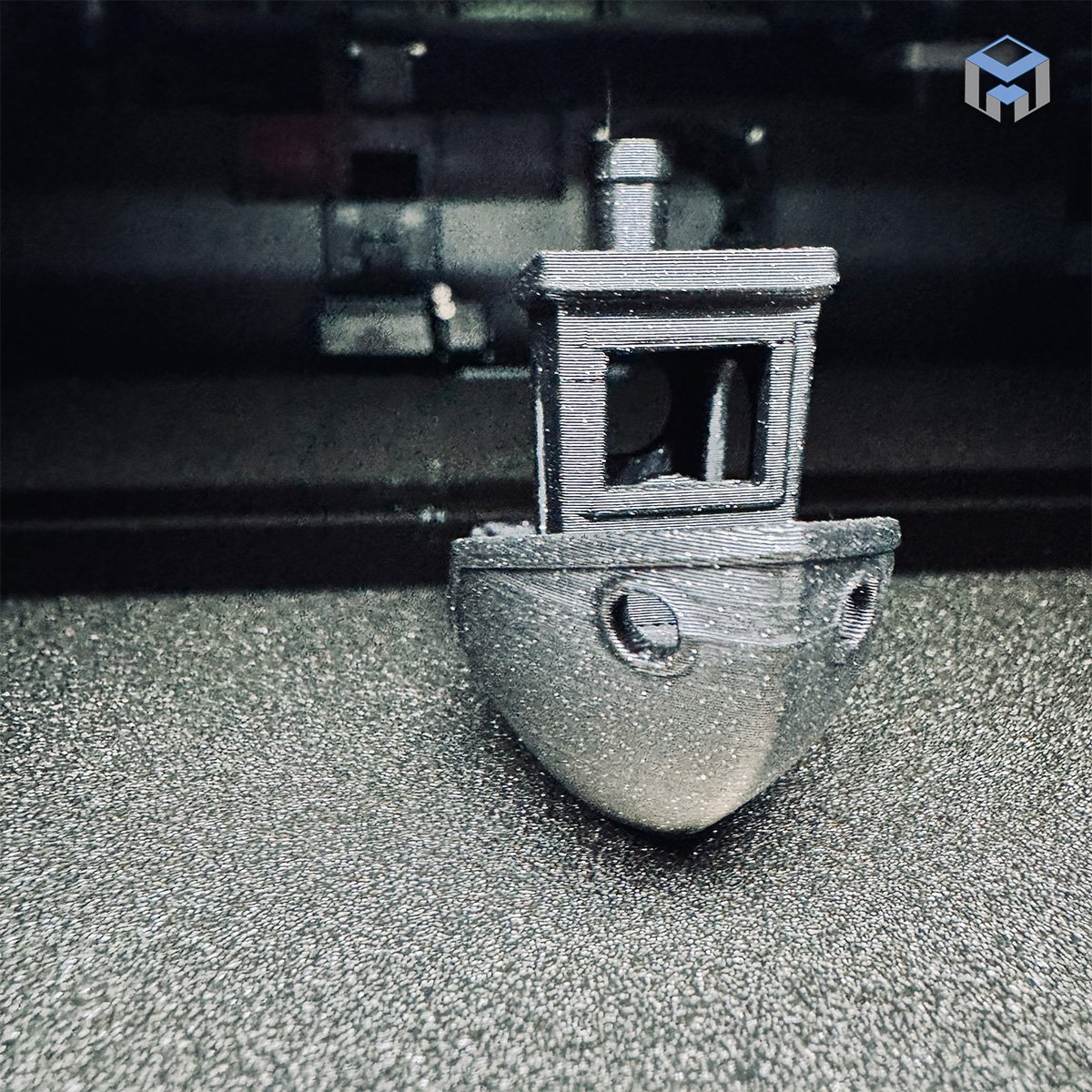



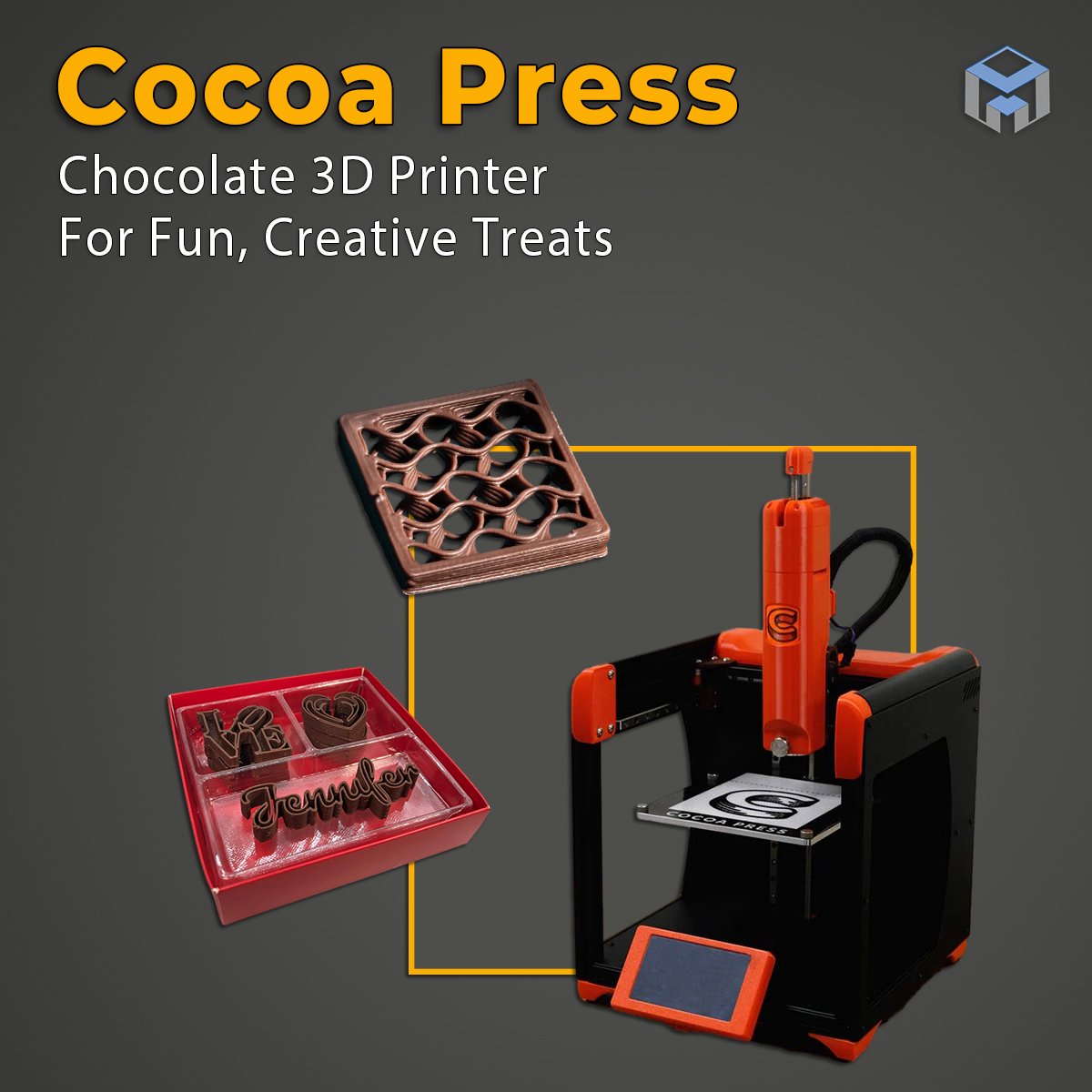












Get an in-depth look at the QIDI Tech Q1 Pro in our detailed review. Find out how this desktop 3D printer delivers engineering-grade filament printing with unmatched precision, speed, and versatility.